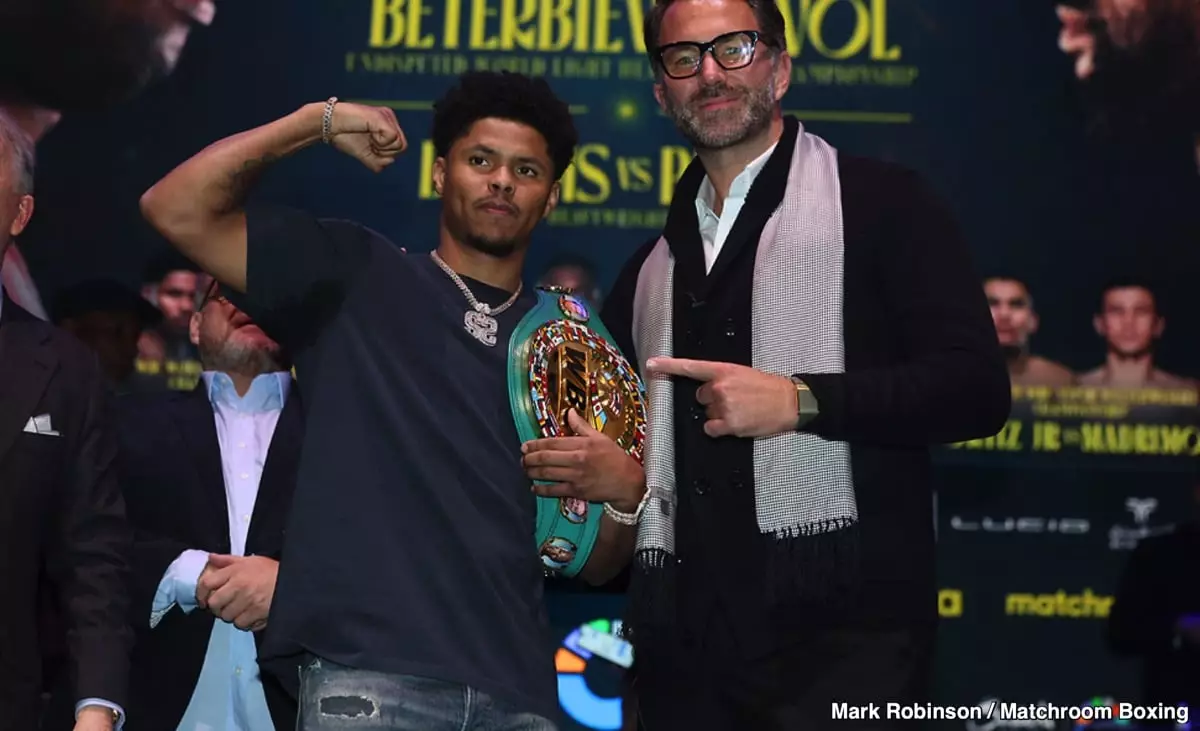Boxing is a sport that thrives on the intersection of skill and entertainment. Fighters are often defined by their distinctive styles and how these styles translate into viewer engagement. Recently, two prominent names have emerged in conversations around the lightweight division: Shakur Stevenson and Gervonta “Tank” Davis. Former champion Mikey Garcia has weighed in on Stevenson’s style and its implications for a potential bout with Davis, provoking an interesting discussion about what makes a fight not just competitive, but compelling.
Mikey Garcia, distinguished for his tactical fighting approach, expressed his reservations regarding Shakur Stevenson’s counter-punching style. Though he acknowledges Stevenson’s exceptional talent—having a record of 22-0 with 10 KOs—he categorically states that he is not a fan of potential showdowns featuring the young champion. Garcia’s critique hinges on the belief that Stevenson prioritizes winning through defensive strategy over engaging actively with his opponents. “He’s going to fight his fight. That’s fine,” Garcia remarked, but he also indicates that this commitment to his own approach fails to resonate with fans who might crave more action.
The core of Garcia’s criticism lies in the perception that Stevenson’s style may be effective but lacks the excitement that many boxing fans covet. His assertion that “Shakur Stevenson is going to be a dull” fighter against Davis presents an intriguing perspective on the needs of fans versus fighters. Fighters often focus on strategy and outcomes, while fans typically gravitate toward bouts that stimulate their emotions through aggressive exchanges.
The Fan’s Perspective: Entertainment vs. Skill
One of the most salient points in Garcia’s argument is the contrast drawn between Stevenson and other fighters, specifically Vasily Lomachenko. Garcia respects Lomachenko’s dual ability to be both technically skilled and entertaining, suggesting that his engaging fighting style makes him an ideal candidate for dynamic matchups, such as a potential clash with Gervonta Davis. In contrast, he fears that a fight between Davis and Stevenson might fall short of fan expectations due to the latter’s more cautious approach, leading to a lack of dramatic moments.
This raises important questions about the expectations set upon fighters in today’s boxing landscape. Fans often equate activity in the ring with entertainment value, which means that a defensive fighter might face challenges in securing lucrative matchups. Garcia’s views suggest that specifics around aggressive engagement have become a critical factor in a fighter’s marketability in addition to their technical abilities.
In the larger context of the lightweight division, where hype and talent coalesce, remaining relevant requires more than just skill; it necessitates the ability to deliver thrilling performances. Garcia noted that Stevenson is primarily interested in pursuing high-profile fighters like Davis and Lomachenko, strategically aiming for bouts that promise visibility and excitement. Yet, he expresses skepticism regarding how enthusiastic promoters or fans might initially be for a fight with Stevenson due to his fighting style.
Moreover, Garcia’s remarks hint at the business side of boxing, where decisions are often influenced by the financial interests behind fights. If a promoter like Turki Al-Sheikh decides that a showdown between Tank and Shakur is profitable, it might happen despite Garcia’s and other analysts’ concerns. Ultimately, it will boil down to a delicate negotiation of interests, where fan excitement and financial viability are weighed against stylistic choices.
Garcia ultimately suggests that for Stevenson to attract more exciting matchups, he may need to evolve his style. While he praises Stevenson’s tremendous talent—highlighting his speed, reflexes, and counter-punching ability—he also contends that these assets may not be enough to build a compelling brand in boxing without embracing a more aggressive approach.
While Mikey Garcia’s criticisms of Shakur Stevenson’s style may represent a broader sentiment among certain fan demographics, they also evoke dialogue about the essence of boxing itself. The sport is juxtaposed between the fine line of tactical brilliance and the fervent desire for entertainment. How fighters adapt their styles to satisfy both their competitive nature and their audience’s desires could very well shape the future landscape of boxing.


Leave a Reply